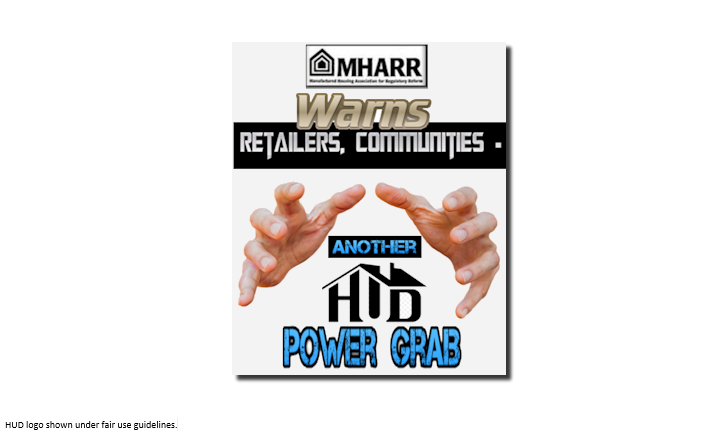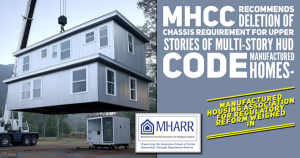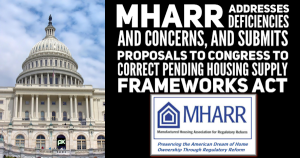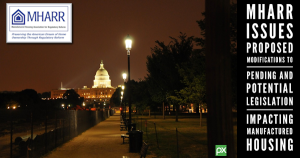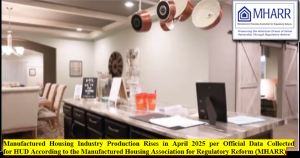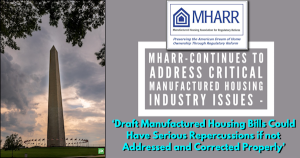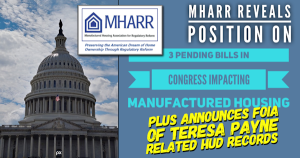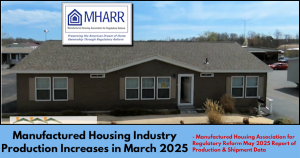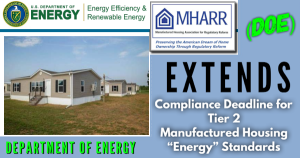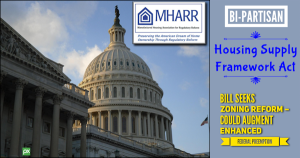[vc_row][vc_column][vc_column_text]The HUD manufactured housing program, on June 21, 2017, published a proposed “Interpretive Bulletin” (IB) in the Federal Register (copy attached) that would effectively change the substance of the current federal installation standards (24 C.F.R. 3285.312(b)) for “frost-free or “frost-protected” manufactured housing foundations used in “freezing
 climates.” This proposal, which MHARR has explained and detailed in multiple reports since the issue first emerged in April 2016, is just the latest regulatory outrage to emerge from a HUD program that has careened out-of-control under a program Administrator who appears to be pursuing an individual agenda particularly targeting smaller industry businesses.
climates.” This proposal, which MHARR has explained and detailed in multiple reports since the issue first emerged in April 2016, is just the latest regulatory outrage to emerge from a HUD program that has careened out-of-control under a program Administrator who appears to be pursuing an individual agenda particularly targeting smaller industry businesses.
Together with the on-site construction rule — adopted by HUD and the current career Administrator over unanimous opposition and objections of the Manufactured Housing Consensus Committee (MHCC) – the proposed IB: (1) rejects key recommendations of the MHCC; (2) will needlessly and unnecessarily increase the cost of virtually every installation of a new manufactured home in covered frost-prone areas with absolutely no showing of need, necessity or failures under the existing standard; (3) will needlessly exclude lower-income purchasers from the manufactured housing market and from home ownership altogether; (4) will needlessly increase regulatory compliance costs passed to consumers not otherwise excluded from the market; (5) will harm the manufactured housing industry as a whole – and particularly its smaller businesses – seeking to compete with other segments of the housing industry, while benefitting industry competitors; (6) will disproportionately harm smaller industry businesses in competition with larger industry conglomerates; and (7) will further undermine the federal-state partnership lying at the core of the federal program while benefitting revenue-driven HUD program contractors.
At every turn and in every particular, the proposed IB will harm both consumers and the industry – in terms of affordability and industry competitiveness (among other factors) – based on absolutely no demonstrated evidence of need. Placed in the larger context of other similar recent actions by the program and its current career Administrator, this action is yet another indication of an agenda which seeks to impose increasingly onerous and damaging regulation on the industry, with disproportionately negative impacts on smaller industry businesses and the mostly lower and moderate-income consumers who depend the most on manufactured housing.
Aside from its multiple fatal defects under the Manufactured Housing Improvement Act of 2000 (including but not limited to its failure to assess, consider or account for increased regulatory compliance costs and its use of a so-called “interpretive Bulletin” to change the substance of an existing standard among other things), the proposed IB, on its face, violatesfundamental regulatory reform policies and mandates enacted under the Trump Administration.
First, the Trump Administration, on January 20, 2017, issued a regulatory “freeze” order, directing all federal agency heads to “send no regulation” to the Federal Register for publication “until a department or agency head appointed or designated by the President after noon on January 20, 2017 reviews and approves the regulation.” The freeze order expressly states that it applies to “any agency statement” that constitutes “an interpretation of a statutory or regulatory issue.” As a result, the proposed IB is plainly covered by the freeze order. Yet, there is no indication that the IB was either reviewed or approved by a Trump Administration agency head or designee. Instead, the IB was issued under the name of “General Deputy Assistant Secretary for Housing, Genger Charles,” who held that position during the Obama Administration and, apparently, is an Obama Administration holdover. MHARR will communicate soon with the White House to determine how this extremely detrimental action for the industry and consumers has occurred at HUD right under the nose of the Administration, exactly who is responsible for this betrayal of the clear regulatory principles of the Trump Administration, and who else may have been involved in this action.
Second, publication of the proposed IB violates at least two other Trump Administration Executive Orders (EO), EO 13771 and EO 13777. EO 13771 requires that “whenever an … agency publicly proposes for notice and comment … a new regulation, it shall identify at least two regulations to be repealed.” Insofar as the proposed IB constitutes a “proposed regulation,” both within the meaning of the EO and substantively under the 2000 reform law, HUD should have simultaneously identified “at least two” existing regulations for repeal – which it has not done. Further, EO 13777 states “It is the policy of the United States to alleviate unnecessary regulatory burdens placed on the American people.” The proposed IB, however, will clearly – and needlessly – increase those burdens, in violation of Trump Administration policy. Again, MHARR, as part of its aggressive opposition to this action, will demand answers as to why and how HUD took this action.
Further, and even worse, the proposed IB is a key element of an attempted power-grab by HUD and the manufactured housing program Administrator to dictate installation standards and practices in all 50 states, as previously detailed by MHARR(see, November 1, 2016 MHARR Washington Update – “MHCC Meeting Exposes Looming Installation Crisis”).
It is, therefore, essential that this action and the Administrator’s broader agenda be stopped. Consequently, all program stakeholders – including consumers, states, retailers, communities, manufacturers, installers and others – need to: (1) understand exactly what is at stake in the rapid decline of the program under the current Administrator; and (2) take direct action – contacting congressional representatives, Senators and HUD officials, among others – to demand the withdrawal of the proposed IB as well as a halt to such activity which threatens to undermine manufactured housing as the nation’s most affordable source of non-subsidized housing and home ownership.
Comments on the proposed IB are due on or before August 21, 2017. MHARR encourages all industry members to submit comments objecting to the proposal. As always, MHARR will submit comprehensive comments in advance of the deadline, which will be made available for use or referral by industry members.
Manufactured Housing Association for Regulatory Reform (MHARR)
Washington, D.C. 20004
Phone: 202/783-4087
Fax: 202/783-4075
Email: MHARRDG@AOL.COM
[/vc_column_text][/vc_column][/vc_row]

